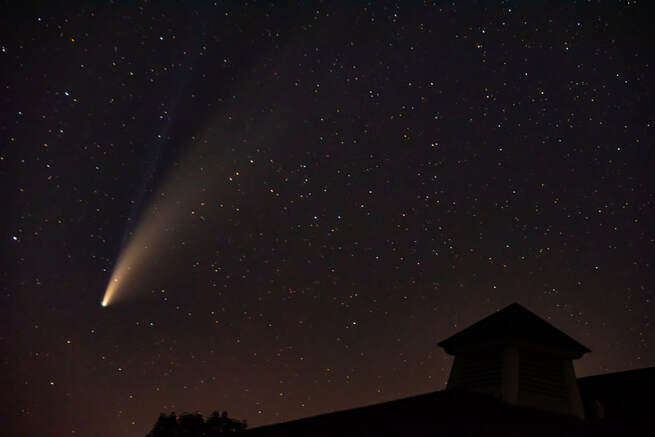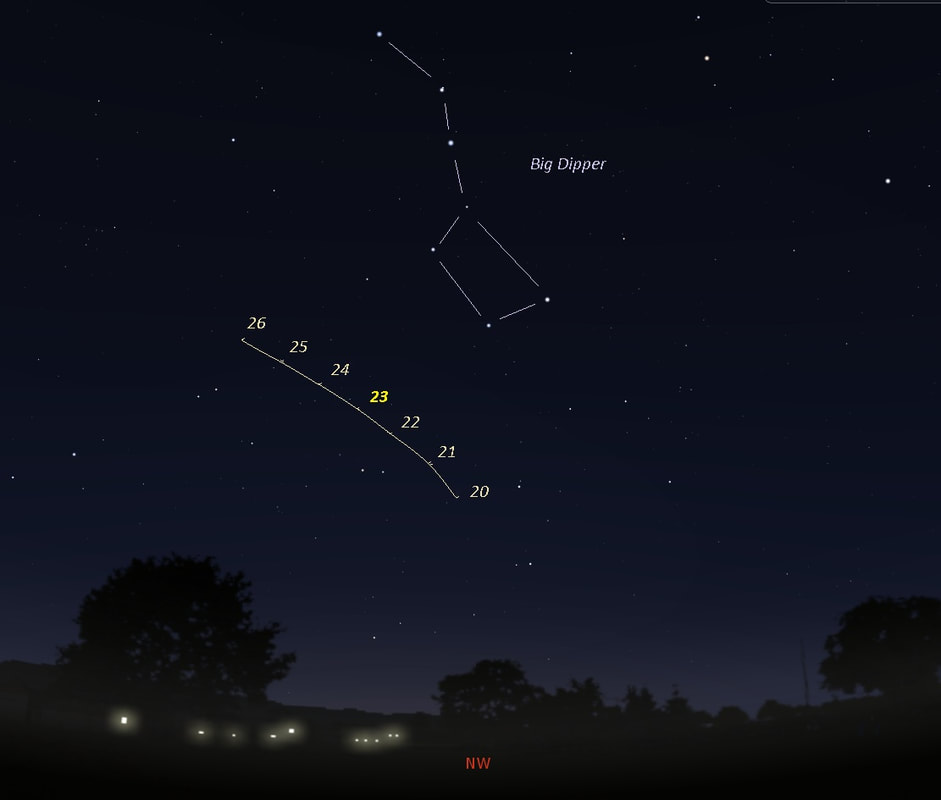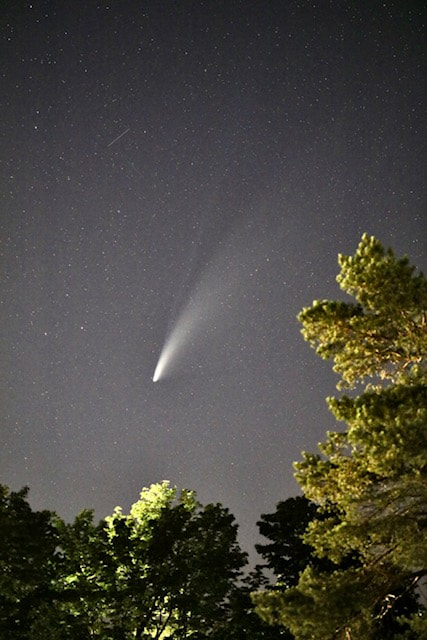|
Photograph taken by Wylie Dulmage at Horizons Observatory: July 17, 2020 Ready to experience what is arguably the best look at a comet in the last 20 years? If so, grab a pair of binoculars on any clear night between now and July 23rd, look to the northwestern sky between 9:30pm-midnight just below the Big Dipper (see below), and be prepare yourself for a spectacular view of Comet NEOWISE. If you don’t spot the comet this time around, you won’t get another chance. It has a long, elliptical orbit, so it will be approximately 6,800 years before NEOWISE returns to the inner parts of the solar system. Comet Neowise has a nucleus measuring roughly 5 kilometers (3 miles) in diameter, and its dust and ion tails stretch hundreds of thousands to millions of kilometers while pointing away from the Sun. The icy visitor was discovered on March 27, 2020, by NASA’s Near-Earth Object Wide-field Infrared Survey Explorer(NEOWISE) spacecraft as the comet was headed toward the Sun. Comets are made of frozen leftovers from the formation of the solar system roughly 4.6 billion years ago. The masses of dust, rock, and ice heat up when approaching the Sun; as they get closer, they spew gases and dust into a glowing head and tail. Satellite data indicate the NEOWISE has a dust tail and two ionized gas tails. The comet is made visible by sunlight reflecting off of its gas emissions and dust tail. (https://earthobservatory.nasa.gov/images/146996/comet-neowise-brightens-the-night) Photograph taken by Horizons Observatory Docent Scott Griswold: July 17, 2020
0 Comments
|
Welcome to the Horizons Observatory blog. All public events at the Observatory will be posted on this page. Sign up below to receive an email notification of upcoming events. If you signed up for our notifications before December 2019, please re-enter your address. This is a new feed service, prior addresses were not transferred.
Your emails will be used by Blogtrottr to deliver notifications. We will not have access to them.
CategoriesArchives
March 2024
|

|
|
- Home
- About
- Blog
-
Gallery
- Horizons Events >
-
Student Astrophotographs
>
- 2023-2024 Astrophotos
- '22-'23 Astrophotos
- '21-'22 Astrophotos
- '19-20 Astrophotos
- '18-19 Astrophotos
- '17-'18 Astrophotos
- '16-17 Astrophotos
- '15-16 Astrophotos
- '14-'15 Astrophotos
- '13-'14 Astrophotos
- '12-'13 Astrophotos
- '11-'12 Astrophotos
- '10-'11 Astrophotos
- '09-'10 Astrophotos
- '08-'09 Astrophotos
- '07-'08 Astrophotos
- '06-'07 Astrophotos
- '05-'06 Astrophotos
- '04-'05 Astrophotos
- Reference
- Contact
- Presentations
Pomfret, Vermont



 RSS Feed
RSS Feed